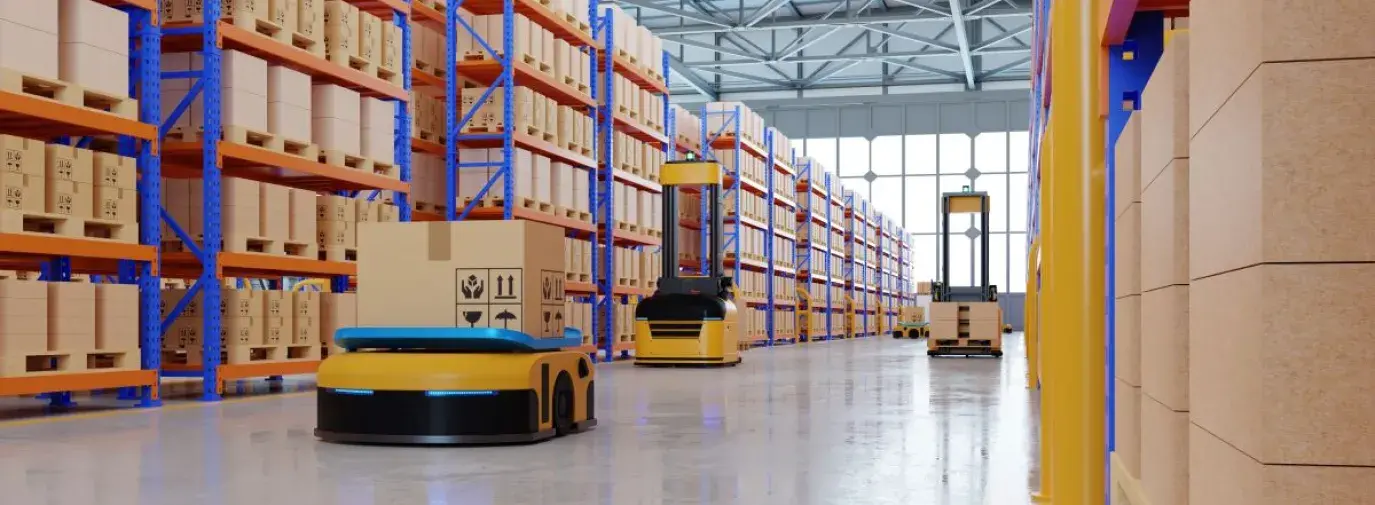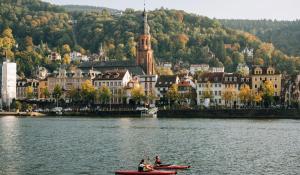
In movies, robots oscillate between good and evil. Wall-E cleaned up trash on an abandoned planet while childlike M3gan committed murder without remorse.
In the workplace, robotics issues looks more like 2019’s Oscar winning documentary “American Factory,” which shows automation bringing an Ohio glass-making factory back to life, but not necessarily giving a good life to workers in it.
When it comes to workplace robotics, the first equipment was introduced by engineers at General Motors in 1961: a robotic arm that could lift and stack 75 pounds of hot metal at a time. With this, dangerous tasks for people were made safer by a machine.
Jessie HF Hammerling, co-director of the Green Economy program at the University of California Berkeley Labor Center, emphasizes that robotics are not inherently bad or good—we have to ask, how are they being used? The answer has huge impacts on workers and the climate.
Robots in the Workforce
Amazon, known for its cheap finds and speedy deliveries at the expense of workers and the planet, employs about 1.6 million people globally and has deployed more than 520,000 robots in its fulfillment and sorting centers. According to investor and CEO of ARK Invest, Cathie Wood, Amazon is adding about a thousand robots per day, which could lead to robots outnumbering human staff in just seven years.
But robots are making the fulfillment centers less safe. Amazon experiences 5.9 serious injuries per 100 employees at non-robotic warehouses (already double the rate of non-Amazon warehouses), but an astonishing 7.9 serious injuries per 100 employees at facilities with robots.
At the Labor Center, Hammerling and her team’s research shows that robotics and enhanced technologies will have a greater impact on job quality than job quantity for human workers. Their multi-year studies covered five of the most robotized sectors—warehouses, trucking, retail, healthcare, and food delivery.
“Job losses were concentrated in specific occupations and limited in scope, but the consequences for workers’ job quality overall were far more substantial, in ways that can have pretty significant negative outcomes for workers, such as lower wages, de-skilling, work speed-up, loss of autonomy and privacy, and the worst impacts were in particular for women and people of color,” Hammerling says.
Outsized impacts on women and people of color come because technological changes can worsen existing inequalities. Many front-line occupations like warehouse workers, cashiers, health aides, and nurses are more likely to be women, people of color, or both.
But, Hammerling says, the effects come from how technology is being developed and deployed. For example, tracking devices used by Amazon to track warehouse workers compromise worker privacy and increase work speeds.
But a similar type of technology has been designed for hotel housekeepers, where location tracking can be activated by a worn panic button, which can help staff get quick help in dangerous situations with guests.
As robots aren’t inherently good or bad for labor, so too with climate—it’s all about context.
Robotics and the Climate
People aren’t thinking enough about the climate impacts of robotics, says Dr. Fiachra O’Brolcháin. He does, as a philosopher and professor at Dublin City University. In his paper, “Environmental Impact of Robotics: Ethical Concerns and Legal Alternatives,” published in Springer Nature in 2020, he and his co-author say that sufficient attention has not been paid to environmental concerns.
“There’s a huge sort of techno-philic attitude in Western cultures—we’re always very excited about new technologies and equate that with progress,” O’Brolcháin says. “Insofar as there’s a focus on the downsides, that I’ve come across, it is the focus on labor and the potential huge loss of jobs from AI and robotics. The environmental aspect has been overlooked.”
The paper brings light to a multitude of issues that should be addressed as robotics are developed and popularized: e-waste, raw materials and chemicals in supply chains, energy use, and environmental justice. For example, if robots become consumer products (as they already have, with robotic vacuums and autonomous vehicles), they might become quickly obsolete status symbols that constantly are tossed away and upgraded, instead of well-fabricated, durable machines meant to be used and repaired for a long life cycle.
Workers really need to have a voice in the processes of technological change, whether it’s climate-related or not.
— Jessie HF Hammerling, UC Berkeley Labor Center
Like many products, the issue with robotics is that the environmental impacts—using a green and just supply chain, with fair pay and without polluting marginalized communities—are often only examined after they have happened. O’Brolcháin says there is a need for governments to consider environmental impacts and create regulations to make products in a green way.
“You’d hope that governments would regulate the market so that we are protected from the more pernicious effects of robots. But with governments, it depends on who you vote for and what sort of lobbies are there,” O’Brolcháin says.
Policymakers in the European Union are starting to look at potential issues, with The Ethics Guidelines for Trustworthy AI, and GDPR, a data protection act, but while those do reference human rights, they are not designed to address environmental concerns.
Many roboticists are looking to create climate good with their technologies, which can take on dull, dirty, and/or dangerous tasks—for example SS MAPR, an autonomous boat that can be used to check river pollution and collect data at multiple depths, which could drive stronger pollution laws. Oak Ridge National Laboratory is working on developing robots to repurpose retired electric vehicle batteries to be used as energy storage for buildings—using robots for this can reduce human exposure to toxic chemicals and high voltage.
What’s Next
What’s clear from both Hammerling and O’Brolcháin is that robotic technologies have potential to better human lives and the environment. Tech companies, governments, and potential purchasers of robotics need to participate in ensuring that outcome.
Both experts hope a change in perspective could be what’s next.
“Is it progress to develop a huge number of robots, if they’re very detrimental to the planetary system that we rely on for survival?” O’Brolcháin asks. “Or should there be some notion of a collective good for us all [including nature]?”
Hammerling says for any type of technological change, as workers’ processes change, their feedback needs to be considered.
“Robotics is just one of many types of technological change. The transition to a low-carbon economy is also a form of technological change,” Hammerling says. “Workers really need to have a voice in the processes of technological change, whether it’s climate-related or not.”
At the end of the day, she says that comes down to soliciting feedback from workers and allowing organizing among workers as their workplaces change.
Technology continues to advance, with robotics in the past, present, and future. To ensure that they contribute to an environmentally sustainable society and people-first economy, we must institute technologies while considering the collective good of workers and the planet.







